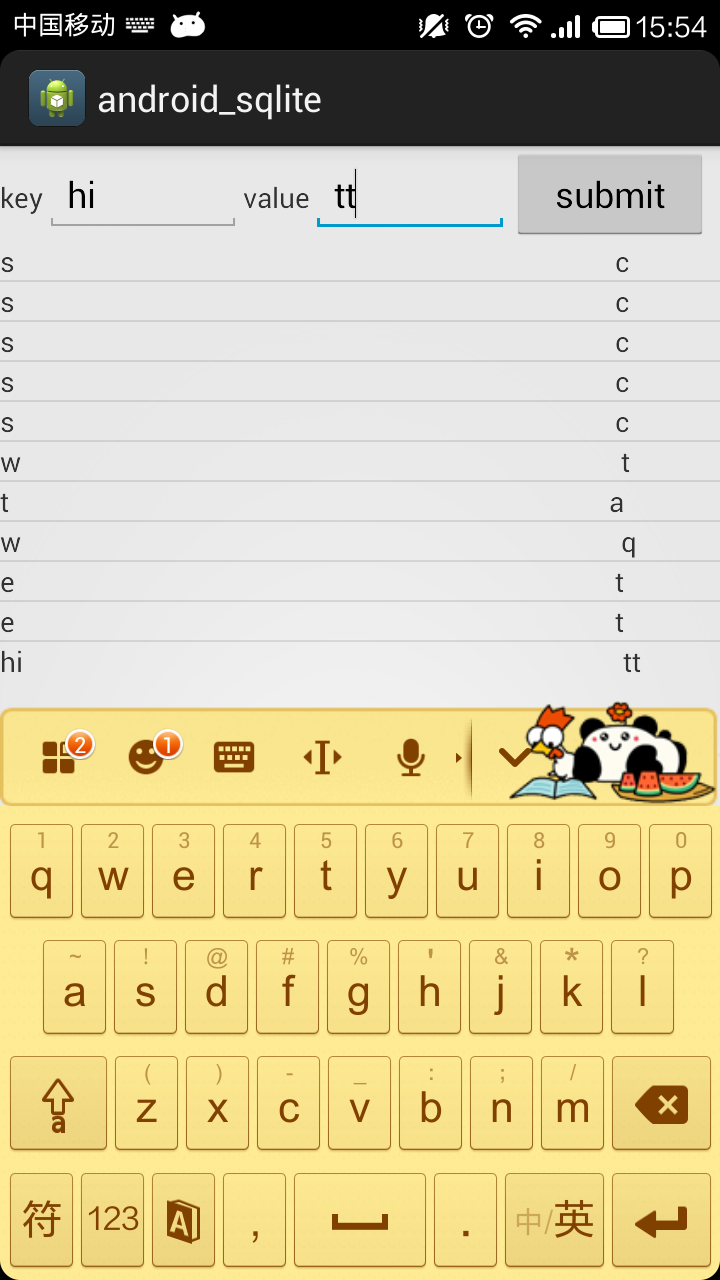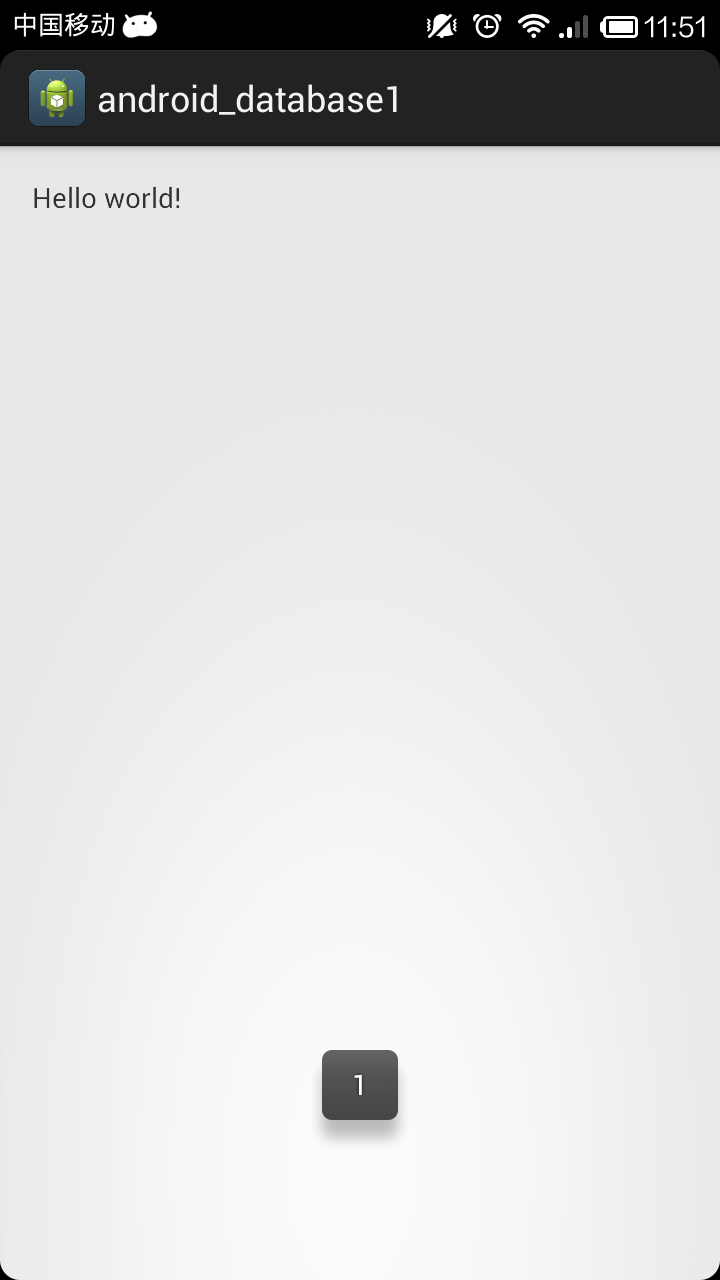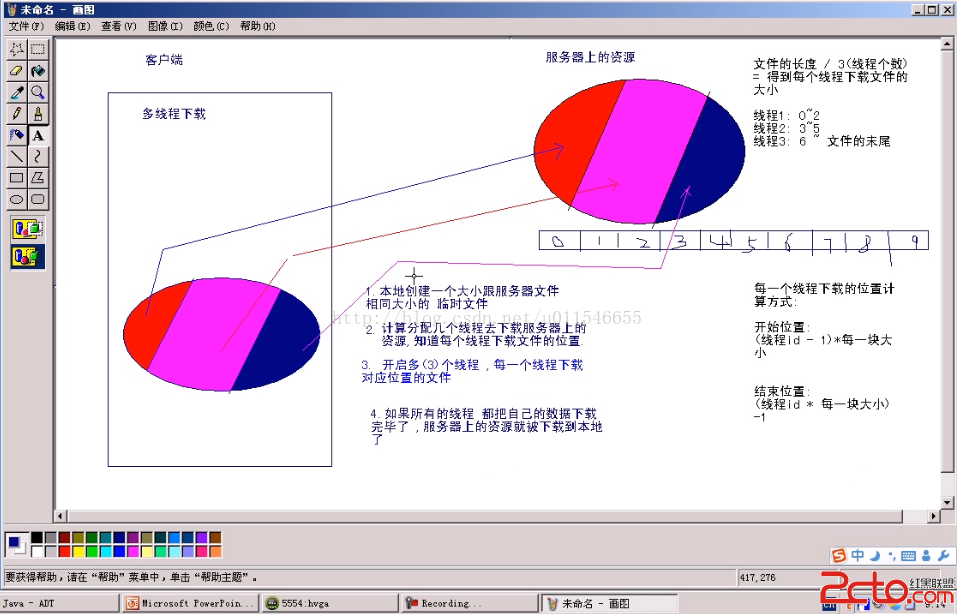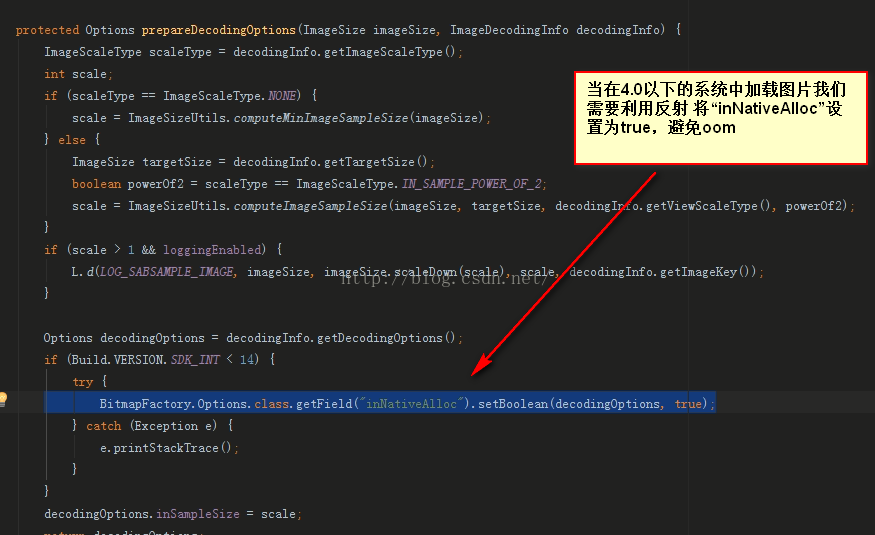編輯:關於Android編程
SQLite數據庫是android系統內嵌的數據庫,小巧強大,能夠滿足大多數SQL語句的處理工作,而SQLite數據庫僅僅是個文件而已。雖然SQLite的有點很多,但並不是如同PC端的mysql般強大,而且android系統中不允許通過JDBC操作遠程數據庫,所以只能通過webservice等手段於php、servlet交互獲取數據。
基礎
SQLiteDatabase類,代表了一個數據庫對象,通過SQLiteDatabase來操作管理數據庫。
一些基本的用法:
通過這些靜態方法可以很方便的打開和新建一個數據庫。
這些函數可以完成SQL功能,對於查詢出來的結果是用Cursor表示的,類似於JDBC中的ResultSet類,在這些類中通過方法move(int offset)、moveToFirst()、moveToLast()、moveToNext()、moveToPosition(int position)、moveToPrivious()獲取需要的結果行。
下面通過一個實例來說明一下SQLiteDatabase的基本使用:
main.xml:
<LinearLayout xmlns:android="http://schemas.android.com/apk/res/android"
xmlns:tools="http://schemas.android.com/tools"
android:layout_width="match_parent"
android:layout_height="match_parent"
android:orientation="vertical"
tools:context=".Main" >
<LinearLayout
android:layout_width="match_parent"
android:layout_height="wrap_content"
android:orientation="horizontal" >
<TextView
android:layout_width="wrap_content"
android:layout_height="wrap_content"
android:gravity="center"
android:text="key" />
<EditText
android:id="@+id/keys"
android:layout_width="100sp"
android:layout_height="wrap_content" />
<TextView
android:layout_width="wrap_content"
android:layout_height="wrap_content"
android:gravity="center"
android:text="value" />
<EditText
android:id="@+id/values"
android:layout_width="100sp"
android:layout_height="wrap_content" />
<Button
android:id="@+id/btn"
android:layout_width="100sp"
android:layout_height="wrap_content"
android:text="submit" />
</LinearLayout>
<LinearLayout
android:layout_width="match_parent"
android:layout_height="wrap_content" >
<ListView
android:id="@+id/lv"
android:layout_width="match_parent"
android:layout_height="wrap_content" />
</LinearLayout>
</LinearLayout>
用於填充數據的mytextview.xml:
<?xml version="1.0" encoding="utf-8"?>
<LinearLayout xmlns:android="http://schemas.android.com/apk/res/android"
android:layout_width="match_parent"
android:layout_height="wrap_content"
android:orientation="horizontal" >
<TextView
android:id="@+id/listkey"
android:layout_width="wrap_content"
android:layout_height="wrap_content"
android:layout_gravity="left" />
<TextView
android:id="@+id/listvalue"
android:layout_width="wrap_content"
android:layout_height="wrap_content"
android:layout_marginLeft="300sp" />
</LinearLayout>
Main.java
package com.app.main;
import android.annotation.SuppressLint;
import android.app.Activity;
import android.database.Cursor;
import android.database.sqlite.SQLiteDatabase;
import android.os.Bundle;
import android.view.View;
import android.view.View.OnClickListener;
import android.widget.Button;
import android.widget.CursorAdapter;
import android.widget.EditText;
import android.widget.ListView;
import android.widget.SimpleCursorAdapter;
public class Main extends Activity {
EditText ed1 = null;
EditText ed2 = null;
Button btn = null;
ListView lv = null;
SQLiteDatabase db = null;
@Override
protected void onCreate(Bundle savedInstanceState) {
super.onCreate(savedInstanceState);
setContentView(R.layout.main);
ed1 = (EditText) this.findViewById(R.id.keys);
ed2 = (EditText) this.findViewById(R.id.values);
btn = (Button) this.findViewById(R.id.btn);
lv = (ListView) this.findViewById(R.id.lv);
db = SQLiteDatabase.openOrCreateDatabase(this.getFilesDir().toString()
+ "/my.db3", null);
btn.setOnClickListener(new OnClickListener() {
@Override
public void onClick(View view) {
String key = ed1.getText().toString();
String value = ed2.getText().toString();
try {
insertData(db, key, value);
Cursor cursor = db.rawQuery("select * from tb_info", null);
inflateListView(cursor);
} catch (Exception e) {
String sql = "create table tb_info(_id integer primary key autoincrement,db_key varchar(20),db_value varchar(50))";
db.execSQL(sql);
insertData(db, key, value);
Cursor cursor = db.rawQuery("select * from tb_info", null);
inflateListView(cursor);
}
}
});
}
// 向數據庫中插入數據
private void insertData(SQLiteDatabase db, String key, String value) {
db.execSQL("insert into tb_info values (null,?,?)", new String[] { key,
value });
System.out.println("------------------");
}
// 向ListView中填充數據
@SuppressLint("NewApi")
public void inflateListView(Cursor cursor) {
SimpleCursorAdapter adapter = new SimpleCursorAdapter(Main.this,
R.layout.mytextview, cursor, new String[] { "db_key",
"db_value" },
new int[] { R.id.listkey, R.id.listvalue },
CursorAdapter.FLAG_REGISTER_CONTENT_OBSERVER);
lv.setAdapter(adapter);
}
@Override
protected void onDestroy() {
super.onDestroy();
if (db != null && db.isOpen()) {
db.close();
}
}
}
實現的效果:

需要特別指出,在用SimpleCursorAdapter封裝Cursor的時候,要求底層數據庫表的主鍵列的列名為_id,因為SimpleCursorAdapter只能識別主鍵列名為_id的表。
進階
直接使用SQLiteDatabase的openOrCreateDatabase可以直接打開或者是新建一個SQLiteDatabase,但是這裡存在一個缺點。在每次執行SQL語句的時候都需要在try catch語句中進行,如果在try中直接操作的數據庫或者表不存在,就需要在catch中重新創建表並且執行CRUD操作,並且有關數據庫的每一個方法都要這麼做,重復的代碼太多了,所以實際的開發中大都選用SQLiteOpenHelper類。
主要方法:
使用方法:
1)繼承SQLiteOpenHelper。在構造方法中的參數String name就是數據庫的名稱。
2)重寫onCreate和onUpgrade方法。
MySQLiteOpenHelper類:
package com.app.db;
import android.content.Context;
import android.database.sqlite.SQLiteDatabase;
import android.database.sqlite.SQLiteDatabase.CursorFactory;
import android.database.sqlite.SQLiteOpenHelper;
public class MySQLiteOpenHelper extends SQLiteOpenHelper {
String createSQL = "create table tb_test(_id integer primary key autoincrement ,name,age )";
public MySQLiteOpenHelper(Context context, String name,
CursorFactory factory, int version) {
super(context, name, factory, version);
}
@Override
public void onCreate(SQLiteDatabase db) {
db.execSQL(createSQL);
}
@Override
public void onUpgrade(SQLiteDatabase arg0, int arg1, int arg2) {
}
}
Main.java
package com.app.main;
import android.app.Activity;
import android.database.Cursor;
import android.database.sqlite.SQLiteDatabase;
import android.os.Bundle;
import android.view.Menu;
import android.widget.Toast;
import com.app.db.MySQLiteOpenHelper;
public class Main extends Activity {
@Override
protected void onCreate(Bundle savedInstanceState) {
super.onCreate(savedInstanceState);
setContentView(R.layout.main);
MySQLiteOpenHelper helper = new MySQLiteOpenHelper(this, "my.db3",
null, 1);
String insertSQL = "insert into tb_test values(null,'wx',18)";
SQLiteDatabase db = helper.getReadableDatabase();
db.execSQL(insertSQL);
Cursor cursor = db.rawQuery("select * from tb_test", null);
cursor.moveToFirst();
int id = cursor.getInt(0);
Toast.makeText(this, id+"",Toast.LENGTH_SHORT).show();
}
@Override
public boolean onCreateOptionsMenu(Menu menu) {
getMenuInflater().inflate(R.menu.main, menu);
return true;
}
}
實現效果:

 Android 之多線程下載原理
Android 之多線程下載原理
在Android之中呢,對於多線程的操作很是平凡,所以對於多線程的理解越深,那麼對於自己的程序便能夠很好的運行 這也是對於Android開發是一個重要的知識點,那麼我
 仿今日頭條的(一)
仿今日頭條的(一)
頭部用的是TabLayout和ViewPager實現的 底部用的是FragmentTabHost和Fragment實現的先看底部的實現:底部布局: <fram
 Android開發解決加載圖片OOM問題(兼顧4.0以下系統)
Android開發解決加載圖片OOM問題(兼顧4.0以下系統)
我們項目中經常會加載圖片,有時候如果加載圖片過多的話,小則導致程序很卡,重則OOM導致App掛了,今天翻譯https://developer.Android.com/tr
 Android實現熱門標簽的流式布局
Android實現熱門標簽的流式布局
一、概述:在日常的app使用中,我們會在android 的app中看見 熱門標簽等自動換行的流式布局,今天,我們就來看看如何自定義一個類似熱門標簽那樣的流式布局吧(源碼下